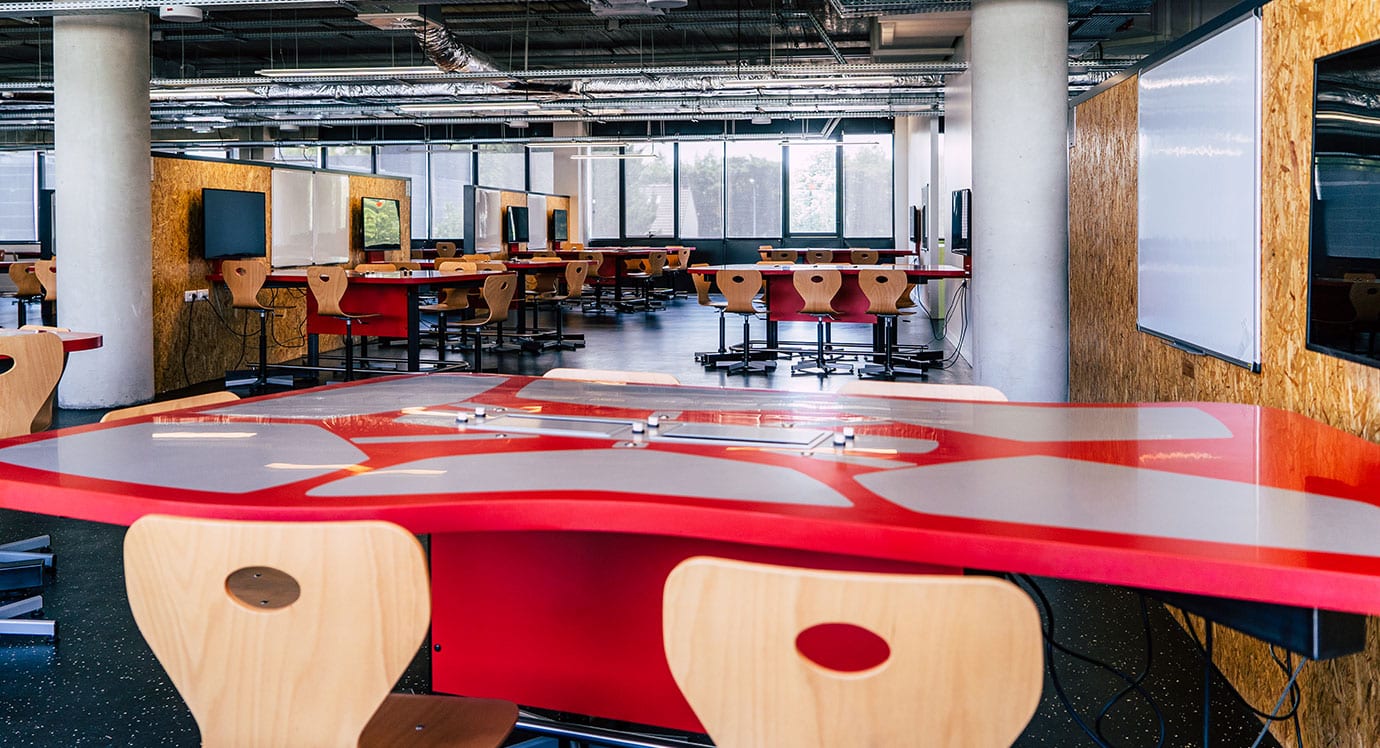The teaching platforms
Confident of the real impact of active teaching on its students’ success, CESI and more specifically the Nanterre campus, is equipped with training spaces designed for the deployment of learning practices that encourage creativity and cooperation.
Innovative workstations, a 100% CESI creation
active teaching methods
CESI was the first mover in pedagogical innovations and has always relied on active teaching methods, including A2P2 (Active Learning through Problems and Projects), to develop the self-reliance of its engineering students and reinforce their employability. This innovative teaching method, based on experimentation, encourages the participation of learners and helps them to become real players in their training.
Designed as a pedagogical demonstrator, these active pedagogical spaces were created to foster the creativity of learners and their ability to work in project type, skills that are essential on the employment market.
The innovative A2P2 tables used in this active teaching approach are the result of research work by LINEACT CESI‘s teacher-researchers and are patent protected. They were designed in close collaboration with UQAM (Université du Québec à Montréal, Canada) and the University of Louvain (Belgium), two well-known institutions for their expertise in active teaching.
The tables are very resistant and can be used for a wide range of purposes: they are perfect for project work in small groups, but they are also suitable for individual work, brainstorming, and even for cutting and prototyping activities. The shape of the table top, not quite rectangular, is not a coincidence, but a real strategic choice. This design was intended to encourage team spirit and to place the learners on an equal footing. Thus, no engineering student is in a leading position, as can happen when a learner sits at the end of a traditionally shaped table.
Digital technology for collaborative work in active learning

The use of digital technologies encourages and enhances active teaching. Each workstation is equipped with a large shared screen: the engineering students can connect their laptop or digital tablet, or even their smartphone, and thus share multimedia content with the whole group.
Digital technology allows teaching in many ways: teachers can test new practices, disseminate content to all learners (images, sound, videos), or even take control of the screen to explain a particular point. The idea is to promote project-based work to get closer to the company model. The layout of the teaching areas, organised in open space, is more similar to the professional world than to the school environment.